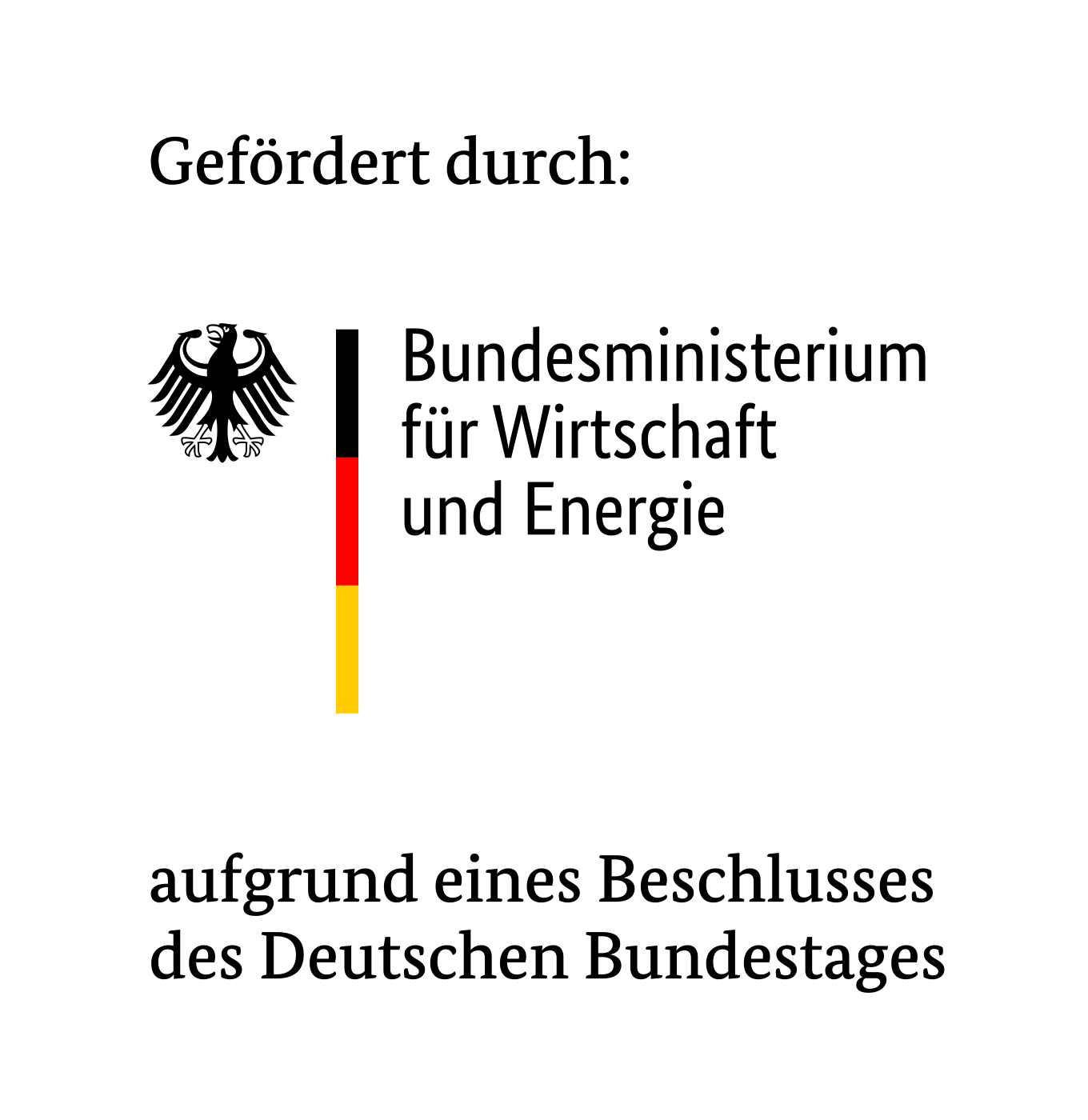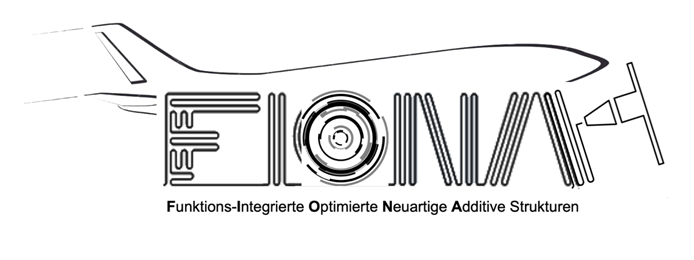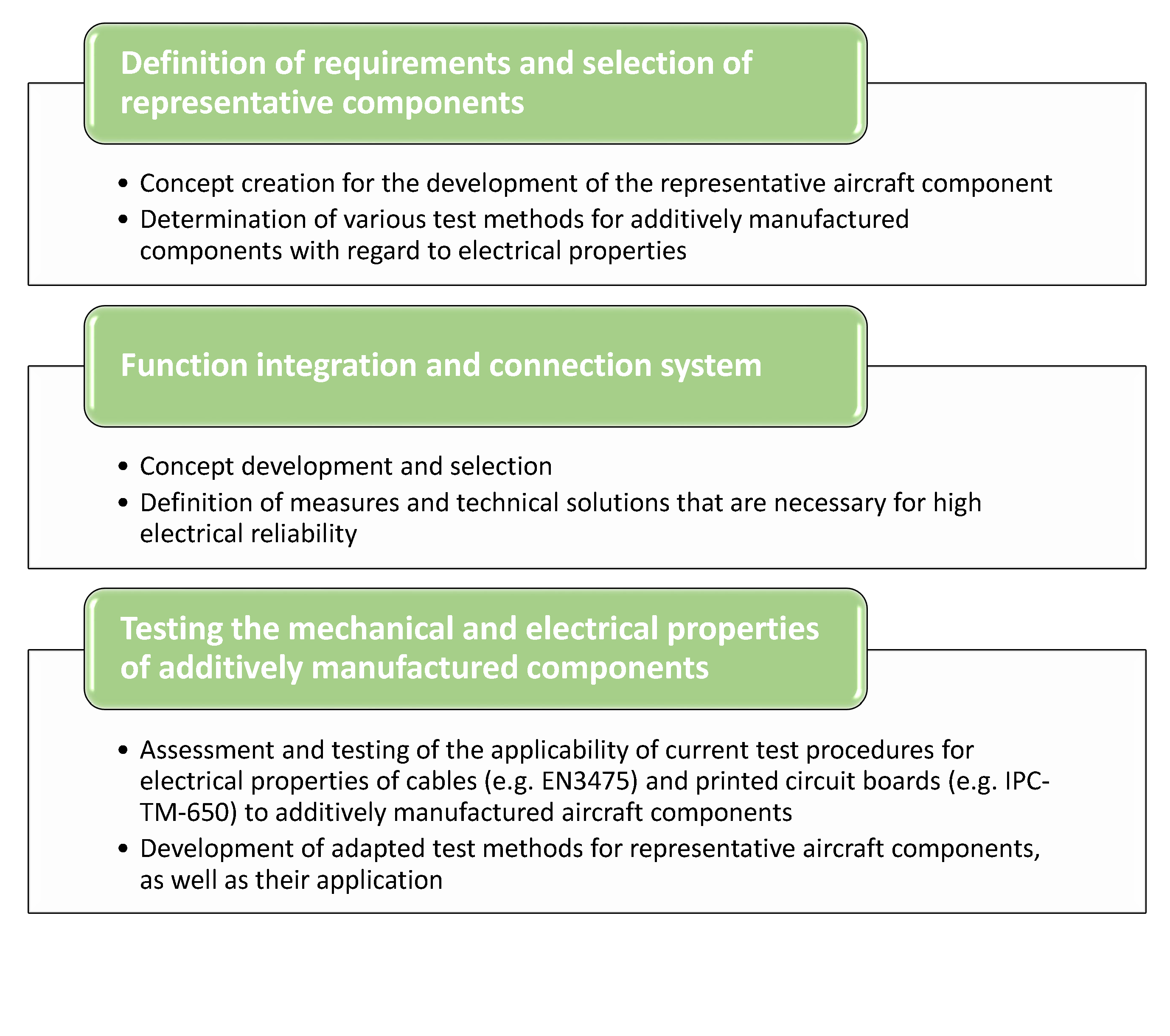

FKZ: 20W1913C
Project background
Initially, the additive production was termed as Rapid Prototyping. The Rapid Prototyping should serve as a fast and cost-efficient method for production of a prototype [1].
Additively manufactured (AM) components for use in the aerospace can be very complex and must satisfy most extreme requirements. These extreme requirements can in turn lead to complex structures. This complexity presents challenges to existing production processes and additionally, with increasing complexity, may result in further increasing production costs.
In the aircraft board supply the electrical energy is transferred with the help of cable harnesses. These can present a high weight, which leads to a high aircraft’s fuel consumption. The electrical function integration in existing aircraft components provides the potential for reducing the weight of the aircraft and, therefore, for saving the fuel. The aircraft’s electrical system belongs to the critical systems of an aircraft [2]. Since the electrical cable harnesses are in commercial aircrafts for a long time practically being produced in an analogous manner, they became very reliable and robust. Thus it was so far difficult to replace them with something as conventional and robust. Some elements of the cable harnesses are being crafted by hand, others involve numerous work steps and a correspondingly high effort. Due to the integration of the electrical functions in existing aircraft components this could be simplified.
In the preliminary investigation of electrical functions integration in 3D printed components, which was carried out by the Helmut Schmidt University (HSU), are being discussed the requested geometrical and material features for the 3D print tests, which are integrated with electrical functions for the use in the aerospace industry. In addition, miscellaneous requested design aspects of the additively manufactured components were described in the electrical tests preparation. Miscellaneous types of potential AM-Materials were examined regarding their characteristics, applicable technologies and electrical conductivity.
The research, development and testing procedures for AM-components within the project FIONA supplements the current standardized test methods to the necessary processes and identifies the essential parameters for the further development of the materials for the AM-technology for aircraft application. Furthermore, the uniform test methods enable the validation of different technologies and material combination with regard to the withstand voltage parameters, current-carrying capacity, arc resistance and sensitivity to electromagnetic interferences. Uniform testing methods enable the accomplishment of statistically evaluable long-term experiments of the aging process evaluation of reliability parameter like the average failure probability.
Project objective
The HSU subproject contains the development of standardised electrical methods of testing for additively manufactured aircraft components for aeronautical applications with integrated electrical functions. Hereafter, scientific and technical working objectives of parts of the project, which serve to the accomplishment of set objectives of the overall project are described.

The Project “Functionally Integrated Optimised New Additive Structures (FIONA)” within the “Luftfahrtforschungsprogramm VI-1” of the BMWi has the project duration of three and a half years and covers the period of time from 01.10.2020 to 31.03.2024.
Sources
[1] P. Constantinou and S. Roy, “A 3D printed electromagnetic nonlinear vibration energy harvester,” Smart Mater. Struct., vol. 25, no. 9, 2016.
[2] V. L. Press and A. M. Bruning, “Advanced Risk Assessment Methods for Aircraft Electrical Wiring Interconnection Systems ( EWIS ),” 2002.
Preliminary work
P. Constantinou and S. Roy, “A 3D printed electromagnetic nonlinear vibration energy harvester”, Smart Mater. Struct., vol. 25, no. 9, 2016.
Y. M. Like, “Airbus plans 3D printed airplanes by 2050”, pp. 1–3, 2018.
R. Krempin, “ Experimentelle Evaluierung der Eignung von ausgewählten Fertigungsverfahren zur Nachbearbeitung von FDM-3D-Druckbauteilen aus PLA”, 2017.
S. Darvish, D. Schulz, “Study, assessment and testing of technologies to incorporate electrical functions in aircraft parts”, 2018.
S. Darvish, D. Schulz, “SP1806489 Investigation of 3D printing for integration of electrical functions”, 2018.
S. Darvish, R. Jordan, D. Schulz, “Report on lab test request of AM specimens for integration of electrics in aircrafts parts”, 2018.
Contact
Prof. Dr.–Ing. habil. Detlef Schulz (subproject manager)
Marc Meyer, M.Sc.
Dipl.–Ing. Baysa Lkhamsuren
Faculty of Electrical Engineering
Electrical Power Systems
Cooperation Partner
Airbus Operations GmbH
Broetje Automation GmbH
Safran Zodic Cabin Controls GmbH
SFS Intec GmbH
Friedrich-Alexander-Universität Erlangen-Nürnberg
Deutsches Zentrum für Luft- und Raumfahrt e.V.
Faserinstitut Bremen e.V.
Alfred-Wegener-Institut, Helmholtz-Zentrum für Polar- und Meeresforschung
FKZ: 20W1913C
Letzte Änderung: 21. September 2023
